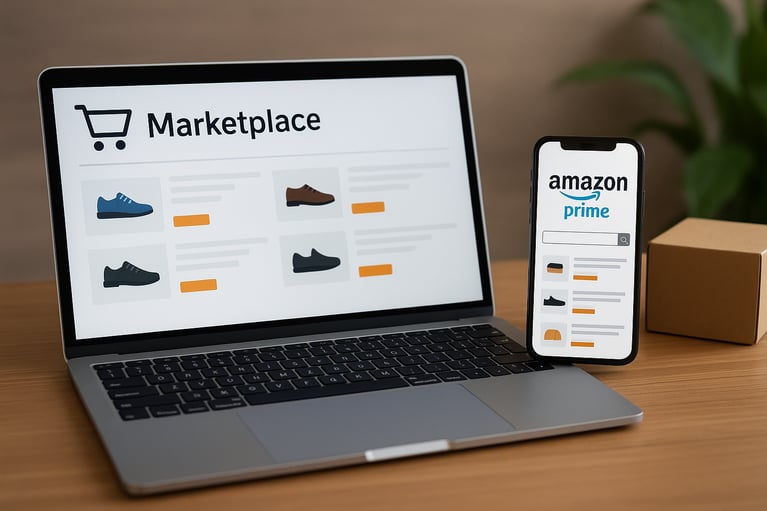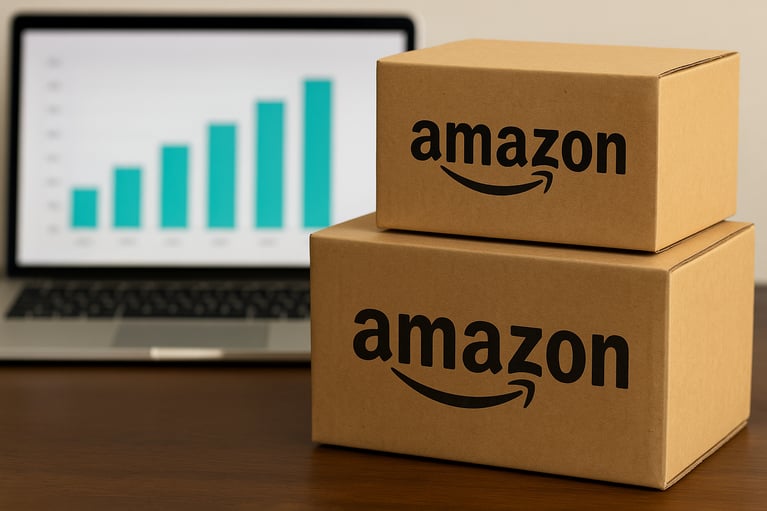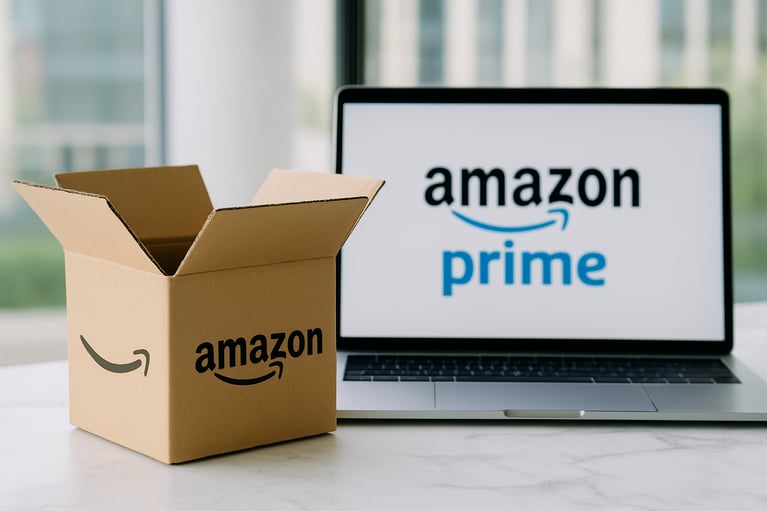Prime Day 2025 is no longer a 48-hour sale, it’s a 4-day sales marathon. Yet despite years of preparation resources and expanded timelines, many brands still find themselves scrambling when Prime Day 2025 arrives. They often make costly mistakes that impact not just immediate sales but long-term market position.
Why? Because they underestimate just how nuanced a successful Prime Day strategy needs to be.
Cart.com’s Amazon Brand Management team partners with high-growth brands to help them succeed not just during Prime Day—but every day. Based on years of firsthand experience, here are the five most common (and costly) mistakes we see brands make and how to proactively avoid them.
Mistake #1: not learning Amazon’s rules of engagement
Amazon is not just another sales channel. It’s a highly structured ecosystem governed by strict rules around fulfillment, content, branding, pricing and compliance. Failing to follow those rules (intentionally or not) can get your listings flagged, deals denied or your Buy Box privileges revoked just right when traffic peaks.
Common pitfalls:
- Last-minute listing rejections due to non-compliance issues that could have been identified weeks earlier
- Deal disapprovals caused by incorrect pricing structures or inaccurate product data
- Poor conversion rates from low-quality listings that fail to capitalize on increased visibility
How Cart.com solves this:
Our pre-Prime Day compliance audits identify potential issues before they become revenue killers. We navigate FBA logistics, A+ content optimization, Brand Registry benefits and Buy Box positioning with the expertise that comes from managing hundreds of successful Prime Day campaigns.
Compliance isn't just about following rules; it's about protecting revenue streams during peak demand periods when every hour of downtime translates to measurable profit loss.
Mistake #2: treating advertising like set-and-forget marketing
Many brands approach Prime Day advertising with traditional marketing mindsets, running campaigns without understanding the event's specific dynamics. The result? With CPCs spiking and ad slots at a premium, budgets deplete by mid-morning, leaving no advertising power for evening peak conversion windows when consumer intent is highest.
Common pitfalls:
- Even ad spend across ASINs without ROI-based prioritization
- Underutilized Sponsored Brand Ads despite their proven Prime Day effectiveness
- Lack of cross-channel integration that misses opportunities to amplify Prime Day momentum
How Cart.com solves this:
We implement bid pacing that stretches budgets through high-conversion periods, making sure your ads remain visible when consumer intent peaks between 7-9 PM.
Cart.com deploys diversified ad portfolios that use Sponsored Brands, Display and Video advertising for full-funnel impact. Our real-time budget reallocation shifts resources toward top-performing products throughout the event, maximizing return on ad spend.
While competitors burn through budgets early, your campaigns maintain visibility during peak conversion hours when purchase intent is highest.
Mistake #3: misjudging inventory demand and readiness
Inventory management during Prime Day requires precision forecasting that balances multiple risks. Research consistently shows that stockouts during Prime Day can lead to substantial revenue losses, missed ranking opportunities and frustrated customers who may not return.
Simultaneously, overstocking strains cash flow and storage capacity which creates long-term financial pressure.
Common pitfalls:
- Inaccurate forecasting leads to missed revenue and stockouts
- Lack of contingency planning for popular products going out of stock mid-event
- Poor coordination between marketing investments and inventory availability
- Ranking deterioration from out-of-stock situations during critical visibility windows
How Cart.com solves this:
Our inventory forecasting makes use of historical sales data, seasonal trends and Prime Day-specific patterns to predict demand with accuracy. Real-time inventory tracking updates inventory across all sales channels instantly, preventing overselling while maintaining optimal stock levels. Low stock thresholds provide early warnings that enable proactive inventory decisions before stockouts occur.
Inventory gaps are more than operational hiccups; they’re ranking killers. With Cart.com, you’re stocked, synced and sale-ready.
Mistake #4: going on autopilot during Prime Day
Too many brands do the hard work upfront and then coast through Prime Day itself. Consumer behavior patterns can change throughout the 4-day event. Technical issues emerge without warning. Brands that adopt "set it and forget it" strategies miss critical optimization opportunities and fail to respond to real-time challenges.
Common pitfalls:
- Pricing remains unchanged as competitors undercut by pennies to win the Buy Box.
- Blanket discounting across products that erode profit margins unnecessarily
- Unaddressed technical issues including broken listings, website problems and pricing errors
How Cart.com solves this:
Our real-time performance tracking dashboards provide visibility into every metric that impacts Prime Day success. Cart.com's on-the-ground brand management team monitors campaigns, pricing and performance indicators continuously throughout the event.
The Prime Day Playbook and Operational Checklist is included to ensure nothing slips through the cracks. Real-time inventory updates across sales channels prevent operational issues that could derail performance.
Your Prime Day strategy needs to be as dynamic as the marketplace itself. Cart.com keeps your brand agile and ahead.
Mistake #5: ignoring the post-Prime Day halo effect
Prime Day's impact extends far beyond the 4-day event window, but many brands fail to capitalize on this extended opportunity. New customers acquired during Prime Day represent future lifetime value that requires nurturing. Without a post-Prime Day strategy, you’re leaving long-term growth on the table.
Common pitfalls:
- Ad campaigns remain active without recalibration, reducing Return On Ad Spend (ROAS)
- Lack of follow-up communication with newly acquired customers
- Missed cross-selling opportunities to customers who demonstrated purchase intent
How Cart.com solves this:
Our post-Prime Day solution begins before the event starts, with customer journey planning that maximizes the value of everyone.
Cart.com's full-funnel strategy kicks in right after Prime Day, including Sponsored Display retargeting and email flows. We create bid and budget reversion plans based on pre-event benchmarks to protect efficiency.
Your Prime Day investment becomes a customer acquisition engine that drives sustained growth rather than a short-term promotional expense.
Don't let short-term missteps sabotage your long-term potential
Avoiding these Prime Day 2025 mistakes isn’t just about preventing losses. It’s about unlocking your brand’s full potential on one of the biggest sales events of the year.
Cart.com's Amazon Brand Management specializes in turning Prime Day challenges into sustained competitive advantages. Our growth marketing team has helped hundreds of brands avoid costly mistakes while achieving measurable results during Amazon's biggest sales events.
Contact our growth marketing experts today to develop your comprehensive Prime Day strategy and win Prime Day and beyond.
Subscribe to our emails for the latest industry insights!
By entering your email, you agree to receive marketing emails from Cart.com





